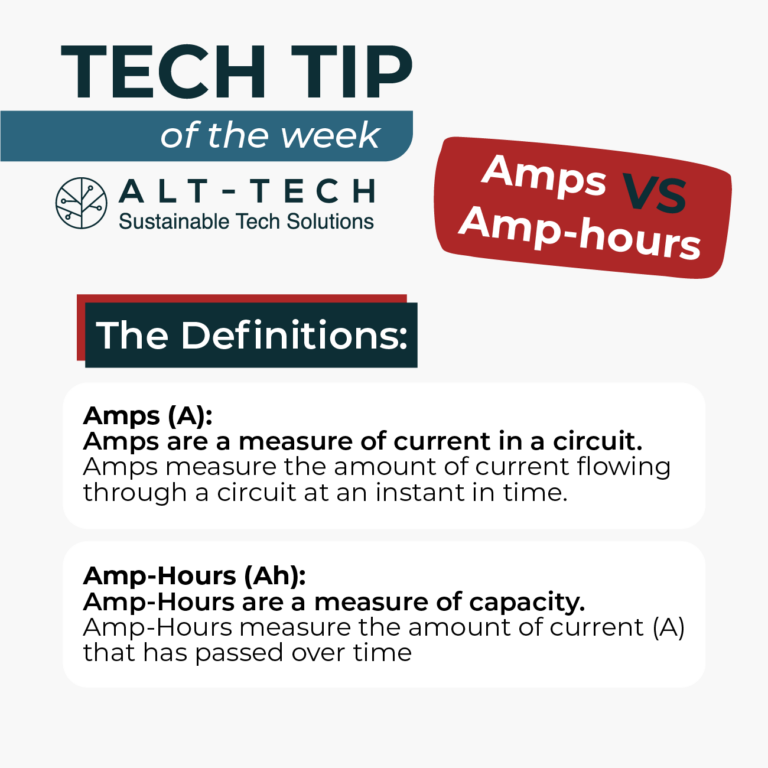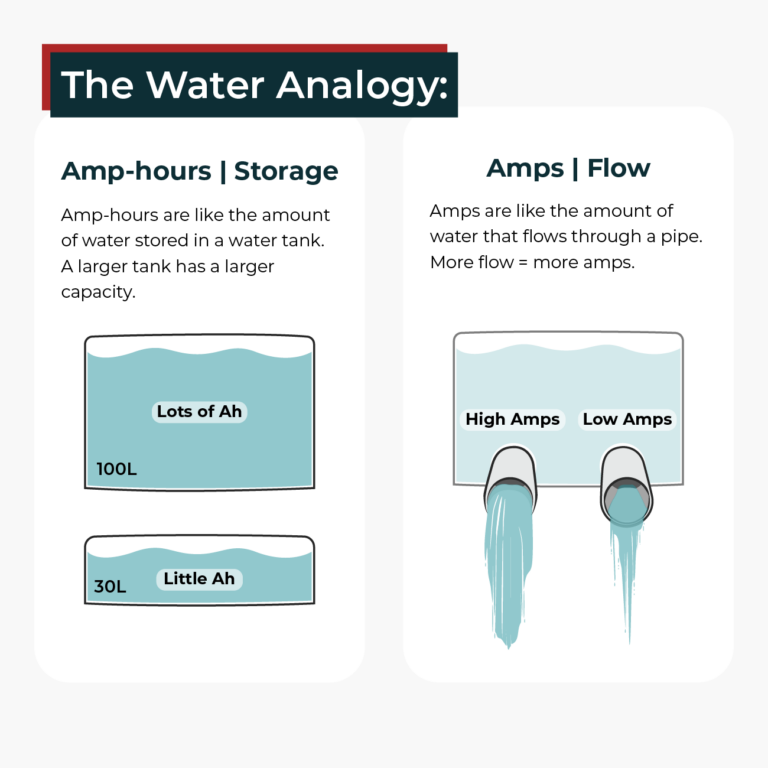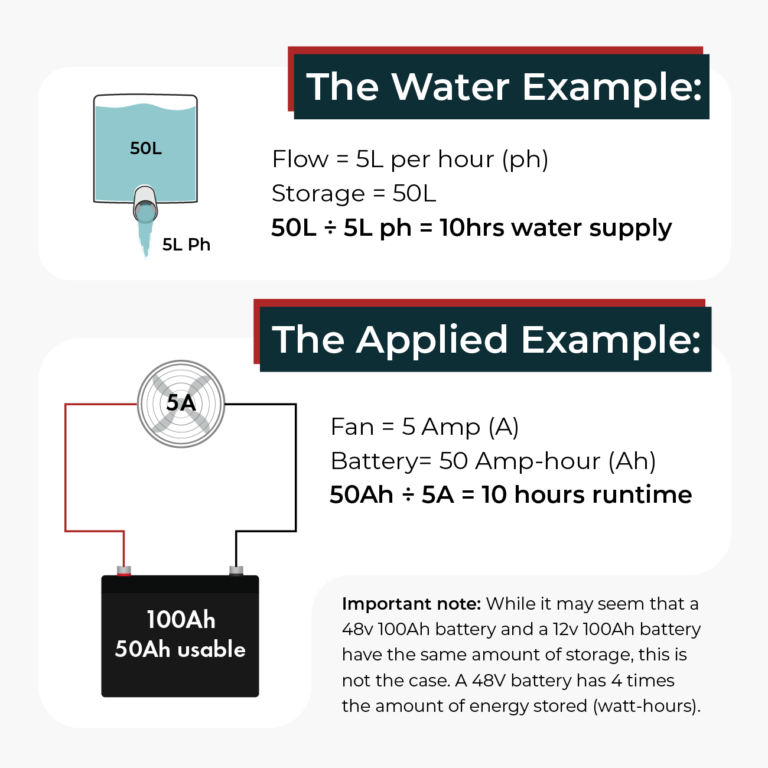Your cart is currently empty!
Amps VS Amp-hours




Understand the difference between amps and amp-hours and how they affect one another.
Simple Explanation:
Amps (A):
Amps are like the amount of water that flows through a pipe. More flow = more amps.
Example: Lets imagine a pipe with a flow of 1 Litre per hour.
Amp-Hours (Ah):
Amp hours are like the amount of water stored in a water tank (Litres). A larger tank has a larger capacity.
Example: Lets assume you have a 50L tank (Similar to 50Ah). If you had a flow of 5L per hour (Lets call this 5A) the tank would empty in 10 hours.
Electrical Explanation:
Amps (A):
Amps are a measure of current in a circuit. Amps measure the amount of current flowing through a circuit at an instant in time.
Amp-Hours (Ah):
Amp-Hours are a measure of capacity. Amp-Hours measure the amount of current (A) that have passed over time.
Calculation: Amp-Hours = Current (Amps) x Time (Hours).
Example: You have a fridge drawing 5A for an hour, you would have used 5Ah of your batteries capacity.
Important note: While it may seem that a 48v 100Ah battery and a 12v 100Ah battery have the same amount of storage, this is not the case. A 48V battery has 4 times the amount of energy stored (watt-hours). This will be explored in a future tech tip.
Disclaimer: Never over discharge your batteries! Make sure that you dont exceed the maximum depth of discharge of the battery.
Leave a Reply
You must be logged in to post a comment.